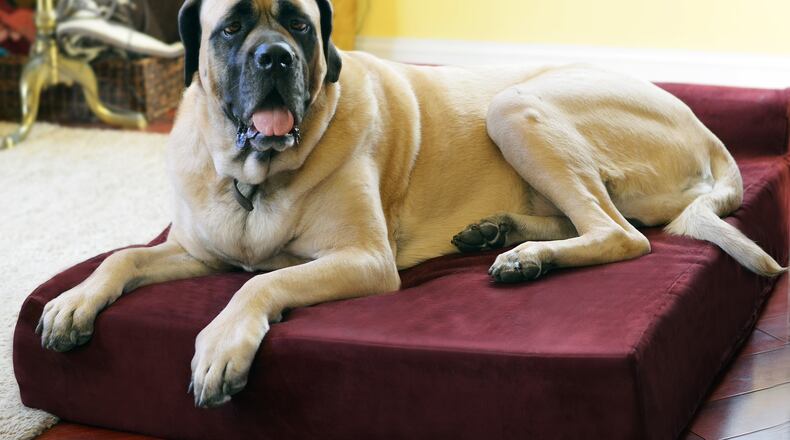When shopping for an orthopedic bed for your dog, it's easy to simply select the most affordable bed, or the one that catches your eye. You know, the pet bed that perfectly matches your duvet.
However, the right bed for your decor has little to do with what's best for your dog, especially if you have a large dog or one that needs extra support due to age, arthritis or hip dysplasia.
Note that you won't be doing your pet, or your wallet, any favors by purchasing an orthopedic bed before doing some homework. You don't want to be that consumer who ends up buying several subpar dog beds over time.
"Ask a large dog owner who has dealt with the flattened bed problem to do the math. If you're buying an orthopedic bed for $100 and replacing it every year after it inevitably craters in the middle, that's $1,000 on dog beds over a 10-year period. And this math is conservative; many dog owners have to replace their beds two or three times per year," says Eric Shannon, founder and president of Big Barker, which makes heavy duty orthopedic beds for dogs.
How much more should you expect to spend for a high-quality orthopedic bed versus a regular dog bed?
Orthopedic dog beds come in a wide range of prices. For instance, the Comfort model, a roomy Big Barker bed with a headrest, costs $239.95. A pillow-style bed made with polyfill (polyester fiber filling) about the same size, and easily found at your local big box pet store, might cost you around $40.
So, what do you get for the extra $200?
"The extra $200 buys your dog a pain-free night's rest -- or at least one that is soothing to any joint issues he may have," says Shannon.
"If you lie on both beds, you'll feel the difference immediately. The Big Barker feels like an expensive mattress. You can dig your knees and elbows into the foam and never feel the ground. On the other hand, the pillow-style bed will feel like a cheap pullout couch or like you're in a sleeping bag on a hardwood floor. It won't feel nice when you roll weight on any of your pressure points."
A thick dog bed doesn't make it orthopedic.
The purpose of an orthopedic dog bed is to eliminate painful pressure points. Memory foam works by molding to the shape of your dog's body, reducing pressure points and relieving pain. However, you can't simply have a thick slab of memory foam as a bed and expect it to support your dog's joints once he sinks into the foam over time and eventually, bottoms out. At that point, the bed is useless, and your dog will not sleep comfortably.
A true orthopedic bed will have at least a layer of therapeutic memory foam on top and a layer of high quality support foam beneath. One company, Buddy Beds, even offers gel memory foam in some of its orthopedic beds to keep dogs cool in the summer and warm in winter.
But, wait, not all memory foams are created equal.
One of the most important tips to heed before you buy your dog an orthopedic bed is to know where that memory foam originated.
Take a look at the labels and you'll find that many components of pet beds are made in China. Memory foam (and other pet bed fillings) from China and other foreign sources may contain toxins that can include phthalates, formaldehyde, BPA, mercury, lead and other toxic heavy metals. Look for memory foam beds that are certified through CertiPUR-US, a not-for-profit testing certification used in bedding products and upholstered furniture.
"It's basically a health check-up for foam. When you buy foam that's not CertiPUR-US certified, you don't always know what's inside that foam -- especially if it's coming from China. Chinese factories have been linked to several tragic quality and safety issues within the pet industry," says Shannon.
If you're ready to start shopping for an orthopedic bed for your pet, here are three companies to get you started. All of these offer orthopedic beds with CertiPUR-US certified memory foam made in the USA.
About the Author
The Latest
Featured


